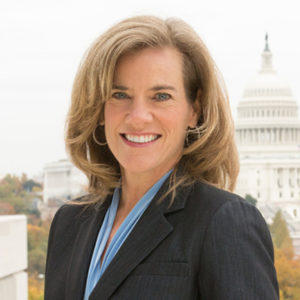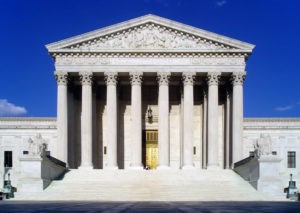The hotly contested barrier between private religious schools and government funding cracked significantly wider June 30 with a landmark ruling by the United States Supreme Court.
In a 5-4 decision, the court ruled that the state of Montana may not bar a private religious school from receiving scholarship assistance through state tax credits. For decades, evangelical Christians and Catholic schools have led a charge to allow faith-based schools to participate equally in state and federal assistance programs. Those efforts have been blocked by strict church-state separationists.
The Montana Supreme Court held that the program in question aided religious schools in violation of the Montana Constitution’s “no-aid” provision. The Supreme Court reversed that ruling, declaring: “The application of the no-aid provision discriminated against religious schools and the families whose children attend or hope to attend them in violation of the Free Exercise Clause of the Federal Constitution.”
The ruling in Espinoza vs. Montana Department of Revenue was predictably condemned and praised.

Holly Hollman
“The decision’s high concern for equal treatment of religious schools disregards the distinctiveness of religion in our constitutional order and contradicts the special treatment that religion rightfully receives to keep government from influencing and interfering with it,” said Holly Hollman, general counsel for the BJC, a Washington-based religious liberty group.
In Montana, the Great Falls Tribune quoted the Center for Education Reform praising the court’s decision.
“The weight that this monumental decision carries is immense, as it’s an extraordinary victory for student achievement, parental control, equality in educational opportunities, and First Amendment rights,” said Jeanne Allen, founder and chief executive. “For many families, Espinoza not only provides the potential for expanded opportunities for them to educate their children, including the choice of religious education, but also the right to decide what they believe is the most effective way to do so.”
This issue of school “choice” has been the center of a cultural and political debate about the meaning of the First Amendment’s Free Exercise Clause and Establishment Clause. On one hand, the First Amendment prohibits government “establishment” of religion, while on the other hand the amendment guarantees “free exercise” of religion.
Advocates of some faith-based schools have argued that their free exercise of religion must allow them to access government funding available to other schools that are not sectarian. Opponents argue that faith-based schools should not generally be eligible for government funding because this would favor one religious group over another and would cause government to “establish” religion.
Justice Clarence Thomas tore into this argument in his opinion concurring with the majority. His separate statement was joined by Justice Neil Gorsuch.

United States Supreme Court building in Washington, D.C.
“Until we correct course” on the court’s own interpretation of the Establishment Clause, “individuals will continue to face needless obstacles in their attempts to vindicate their religious freedom,” Thomas wrote.
“Under the modern, but erroneous, view of the Establishment Clause, the government must treat all religions equally and treat religion equally to nonreligion. … This understanding of the Establishment Clause is unmoored from the original meaning of the First Amendment,” he continued, arguing that the founders intended to protect states from an imposition of religion by the federal government and therefore states should be free to set their own rules on religious freedom and practice.
“Properly understood, the Establishment Clause does not prohibit States from favoring religion,” he argued. “They can legislate as they wish, subject only to the limitations in the State and Federal Constitutions.”
Key points in the majority opinion written by Chief Justice John Roberts:
- The Montana case differs from other cases because the intent was not to fund something as specifically religious as clergy training. “Montana’s no-aid provision does not zero in on any essentially religious course of instruction but rather bars aid to a religious school ‘simply because of what it is’— a religious school.”
- The court found a distinction between “religious status” and “religious use,” implying that the Establishment Clause prohibits favoritism in religious use but not merely because of religious status.
- The state of Montana infringed on free exercise rights while claiming an “alternative view” of religious liberty than the First Amendment intends. “The Department’s argument is especially unconvincing because the infringement here broadly burdens not only religious schools but also the families whose children attend them.”
- The Montana program should be seen as an option for parental choice, not government favoritism. “Any Establishment Clause objection to the scholarship program here is particularly unavailing because the government support makes its way to religious schools only as a result of Montanans independently choosing to spend their scholarships at such schools.”
This latter point has been the heart of religious conservatives’ arguments for school vouchers, for example, fueled by assertions that all parents ought to be able to choose what schools their children attend — public or private — and have equal access to local, state and federal funding available to public schools.
According to the American Council for Private Education there are 34,576 private schools in the United States, serving 5.7 million students from pre-K through 12th grade. These private schools account for 25 percent of the nation’s schools and enroll 10 percent of all Pre-K through 12th grade students, the council reports. Further, “most private school students (78 percent) attend religiously-affiliated schools.”

Charles Johnson
Charles Foster Johnson, executive director of the advocacy group Pastors for Children, called the high court’s ruling “an attack on God’s gift of religious liberty for all people.”
“For the state of Montana, or any governmental authority, to divert money from public schools to underwrite religious schools is patently wrong,” he said. “A tuition tax credit for religious school scholarships takes dollars away from the state treasury for public schools and diverts those dollars to subsidize private religious schools. Why does the State of Montana, or any state, have any role or agency whatsoever in religious schools?”
Hollman of the BJC predicted those who celebrate this victory today may rue the downstream consequences of it. “The more that religious schools are treated just like all other private schools, the harder it is to justify and defend the special accommodations they receive, including in their hiring and firing practices, admission policies and curriculum choices,” she said.
Johnson echoed that warning: “Will Montana religious schools now be required to accept all students who apply? It is the very nature of a private school to be exclusive. Private religious schools were not formed to be religiously neutral. They are voluntary assemblies protected by the First Amendment to advance and establish religious conviction and teaching. These religious schools constitute a core religious mission. They should be protected from government intrusion.”
During arguments before the court, BJC had filed a brief with the court on the side of the state of Montana.
“The attack on Montana’s no-aid provision as a remnant of ‘naked religious bigotry’ … misrepresents a long tradition of non-interference with religion, undermines the complementary nature of religious liberty provisions in our national and state polity, and disregards the distinctiveness of religion,” the brief said. “Petitioners’ demand for a state program for equal funding ignores the distinctiveness of religion and the various ways religious education operates to promote faith formation. It ignores the relationship between support and accountability in public programs and the limits on governmental interference in religion.”
On the opposite side of the argument, the Southern Baptist Convention’s Ethics and Religious Liberty Commission had filed a brief arguing in favor of parental rights to access government funding for the private religious school.
“The Free Exercise Clause shields the right to live out one’s religious identity, which should include giving and receiving education instruction from religious institutions,” the ERLC said on its website June 30.

Russell Moore
ERLC Executive Director Russell Moore said: “These scholarships were not a funding of religion, nor an entanglement of the state with the church. The issue here is whether a state-established scholarship program for private schools could discriminate against parents who chose to send their children to private schools that happen to be religious.”
The battle between public and private schools for funding likely will be accelerated not only by the court’s decision but also by the current pandemic, predicted Lily Eskelsen García, president of the National Education Association.
“At a time when public schools nationwide already are grappling with protecting and providing for students despite a pandemic and mounting budget shortfalls, the court has made things even worse, opening the door for further attacks on state decisions not to fund religious schools. The detrimental impact this decision will have on students throughout this country is shameful and unacceptable.”
The Montana Family Foundation has played a key role in advocating for public funding of private schools in the state, drafting a 2009 tax credit scholarship bill that took six years to pass and resulted in five years of litigation.
Foundation President Jeff Laszloffy, applauded the court’s decision: “The Supreme Court today righted a 131-year-old unconstitutional wrong that had its roots in anti-Catholic bias. This decision was a huge victory for Montana kids and clears the way for Montana to join 42 other states that allow students the freedom to choose a school that fits them best.”
